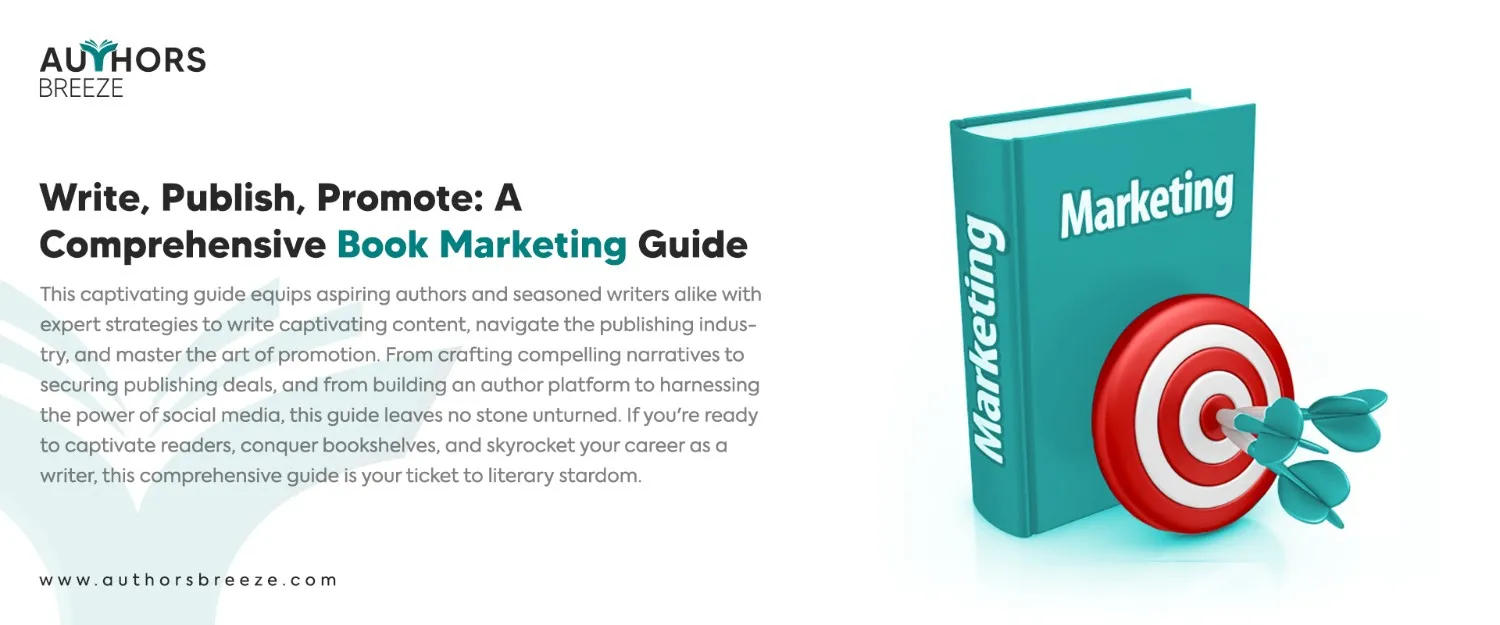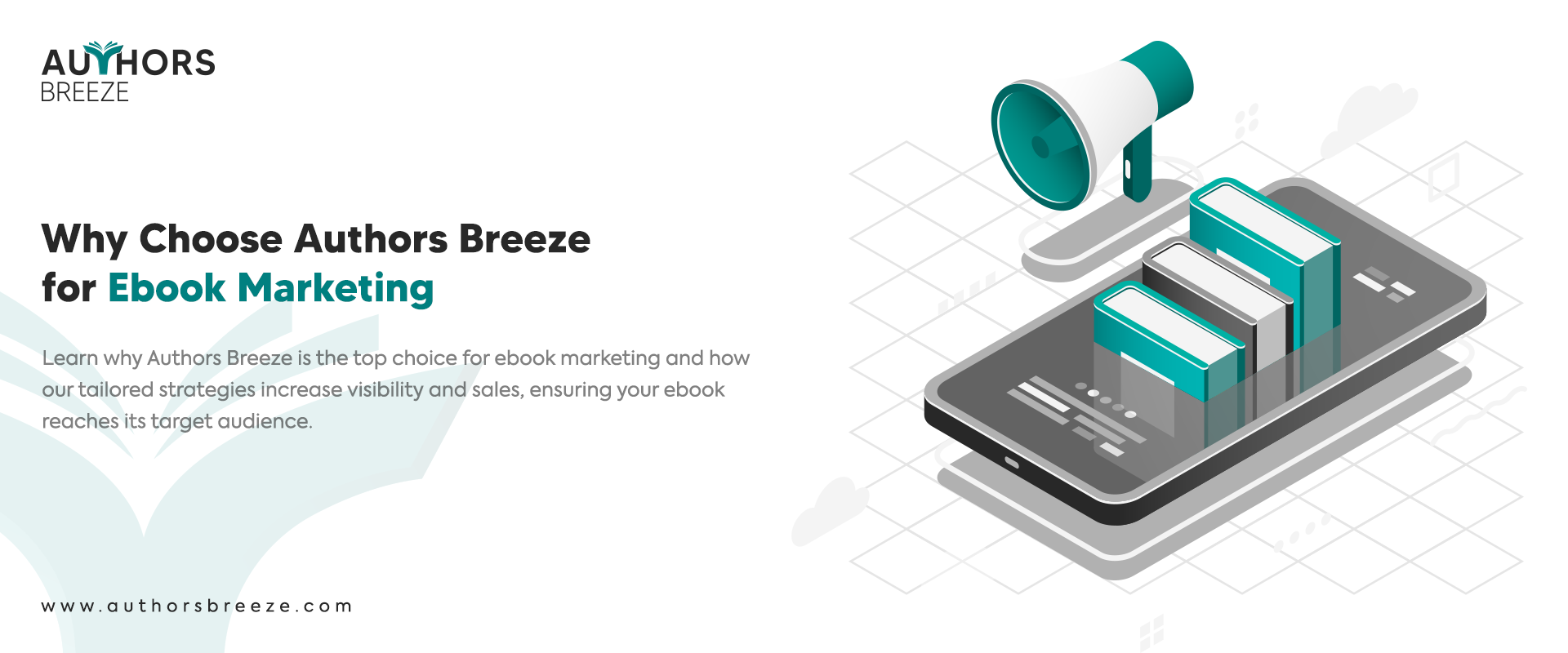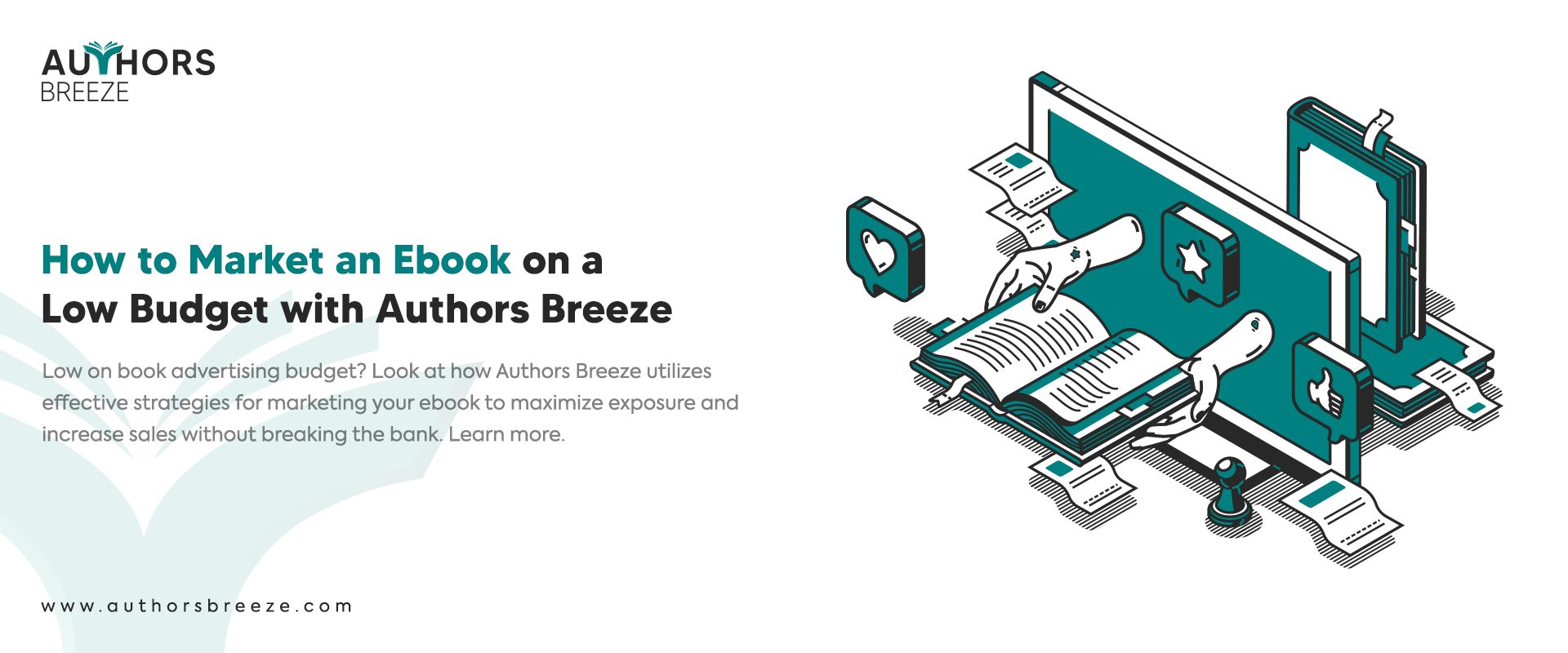You are on the wrong track if you think you do not need to promote your book because you have written a great book or you think you are an established author already. Book marketing should be your top priority after completing the book.
So what is book marketing? Book marketing is basically a plan to promote your literary work. It includes all the advertising and publicity efforts you can make to create awareness about your book to as many readers as possible. As a result, you can sell more books and earn a profit.
Now you know what book marketing is, let’s enlighten you on why you should market your book.
Why is Book Marketing Important for You?
Marketing your book helps the audience recognize you as an author. It not only enables you to promote your book but also makes people aware of you as a writer. So in the future, if you publish another book, people will instantly recognize you. Therefore, it will help them decide whether they want to read your book.
How to Market Your Book?
Marketing your book comes after writing and publishing your book. However, you should start the book marketing process even before you grab your pen to write or open MS Word and type the first letter. Let’s look at step by step the process of marketing a book:
Step 1. Marketing before Writing
The book marketing plan begins prior to writing your book. You should make sure what type of book you want to write. Most importantly, you should know what your audience will be, which means who is going to read your book. If you find answers to those questions, it will be the base of your book marketing plan.
Research the Market
The first step in marketing books is to research the market. Look at what your competitors are up to. Find what are the best sales book. Research what is common in those. For example, in their titles, cover, and book descriptions.
It’s also crucial to discover what you should avoid. You can not take the risk of choosing a genre that isn’t enough to evoke the interest of the audience. The lesser the audience’s interest, the less chance of book sales.
Study the Audience
The audience plays a crucial role in your book-writing journey. When you decide what unique content you’d write about, you should also emphasize which type of reader is interested in that genre. Research their interest, how much they earn, what are their favorite platforms, and also what kind of forums they are active on. All this info will help you make 4 P’s (Product, Price, Place, and Promotion) of your future book marketing strategies.
For example, if you research their interest, it will help you write a book that attracts them. Considering their income can help you set the price for your book. Their favorite platforms will help you determine the place where you should publish your book.
The biggest P of marketing is promotion, which authors often forget about. Book promotion is not just only about making readers buy your book. It is more than sales, making your readers connect with you and build strong relations.
Step 2. Do the Right Things
When you are done researching the market and identifying your target audience, it’s time for the crucial step. That is to complete your book. If you publish a book and want it to be a successful venture, you need to do everything right to make it sell.
Select the Title with the Best Keyword
Before you begin writing, it’s vital to pick a title that not only sets your book apart but also:
- Entice your potential readers
- Is it relevant to your story and genre
- Have a search engine-friendly keyword
Write a Book that Sells
Whether you write a fiction or nonfiction book, you must consider what readers love. You did the research about your audience, now is the time to put it to work. Write a book, keeping your readers in mind. If you convert your words perfectly how your readers want, the right readers will be automatically attracted.
Are you finding it difficult to write your manuscript? You can have ghostwriting services to help you write a perfect book.
Hire a Professional Editor
A book that is not properly edited and formatted has not the potential to sell. No matter how effective you think your book marketing ideas were. Therefore, you need to make sure about book formatting as well as editing.
Need editors for your next literary project? Our book editing services are here to provide you with the best ones.
Design an Eye-Catching Book Cover
You know the audience will judge your book by its cover. Your book cover is one of the essential parts of your marketing. Therefore, it needs to be perfect and professional. Moreover, it should reflect what kind of content is inside. So when you design a cover for your book, select the best book cover fonts, typography, and color.
Step 3. Get your Book in front of the World
Completed your book? Now it’s time to take the next step: publishing it. You may look for a publisher for a book to publish your book. Publishing your book involves making important decisions and taking necessary steps to ensure its availability to readers.
Choose the Right Publishing Option
If we talk about publishing, there are different paths to choose from. For example:
- Traditional
- Self-publishing
- Hybrid
The traditional publishing route involves working with a publishing company that handles the editing, design, printing, and distribution of your book. It can be a long process. However, it offers the support and expertise of professionals.
On the other hand, self-publishing puts you in control. You handle the entire publishing process yourself, from editing to cover design and distribution. It provides more creative freedom and quicker publication, but it also requires more effort on your part to ensure quality.
A hybrid approach combines elements of both traditional and self-publishing. You can work with a self-publishing company that offers editing and distribution services while retaining some control over the process. This option gives you a balance between professional support and personal involvement.
Format your Book for Different Platforms (print, e-book)
Once you’ve decided on your publishing option, you need to consider the different formats your book will be available in. For print versions, formatting involves setting the layout, font styles, and page sizes to ensure a visually pleasing reading experience. You may need to hire a professional book formatter or use self-publishing platforms with formatting tools.
In addition to print, e-books have become increasingly popular. Formatting an e-book involves converting your manuscript into a digital format compatible with various e-readers and platforms. It includes adjusting the layout, embedding images, and optimizing the text for easy reading on screens. eBook writing services often provide e-book formatting tools or allow you to upload formatted files directly.
Publish your Book on the Biggest Platform
If you still want to sell eBooks on a larger scale, KDP is the best platform to publish your book. Kindle Direct Publishing (KDP) has revolutionized the publishing industry. It provides authors with an easy platform to self-publish their books.
Create an Amazon KDP Account
Go to the Amazon Kindle Direct Publishing website (kdp.amazon.com). Sign in using your Amazon account credentials. If you don’t have an account on Amazon, you must create one.
Set up Your Book Title
Click on the “Create a Kindle eBook” button. Enter the necessary details for your book, such as the title, author name, book description, and keywords. You will also need to choose appropriate categories for your book.
Upload your Manuscript
Prepare your manuscript in a supported file format (e.g., MOBI, EPUB, or PDF) and upload it to the KDP platform. You can also use Amazon’s Kindle Create tool to format your manuscript.
Set your Book Pricing and Royalties
Determine the price at which you want to sell your book and select the royalty option (e.g., 35% or 70%). Note that certain pricing options may have specific requirements, such as enrolling your book in Kindle Select.
Choose Publishing Territories
You can also decide where you want your book to be available for purchase. You can select worldwide distribution or specific territories.
Review and Publish
Double-check all the information you provided, preview your book using the online viewer, and make any necessary corrections. Once you are satisfied, click on the “Publish Your Kindle eBook” button to make your book available for sale.
Optimize your book’s metadata to make the most of Kindle marketing, including the title, subtitle, keywords, and book description. These elements greatly impact your book’s visibility in Amazon searches.
Step 3. Crafting Your Marketing Plan
With countless books being published every day, how do you ensure yours stands out? That’s where book marketing comes into place. Before diving into promotion ideas, it’s essential to have a well-thought-out marketing plan in place.
Harness the Power of Social Media
Social media platforms are powerful tools for connecting with readers. So create profiles on platforms like Facebook, Twitter, Instagram, and Goodreads. Also, engage with your audience by sharing valuable content, sneak peeks of your book, and behind-the-scenes insights, and interact with your followers regularly.
Engage Book Launch Strategies
A successful book launch can significantly impact your book’s visibility and sales. You can host a virtual book launch party, invite influencers or fellow authors for interviews or guest posts, and offer limited-time promotions or discounts to create excitement and generate buzz about your book.
Collaborate with Influencers and Bloggers
Influencers and bloggers who cater to your book’s genre or niche can help expand your reach. You can contact them for potential collaborations, such as book reviews, interviews, or guest blogging opportunities. Their endorsement can boost your book’s credibility and attract new readers.
Leverage Email Marketing
Email marketing remains a top tool for reaching your target audience directly. So, create an email list by offering incentives like exclusive content, sneak peeks, or freebies related to your book. You can send regular newsletters, updates, and special offers to nurture your relationship with your readers.
Book Tours and Author Events
Virtual or physical book tours and author events are excellent ways to connect with readers and generate publicity. Collaborate with local bookstores, libraries, or online communities to organize book readings, signings, or webinars. Moreover, engage with your audience, answer their questions, and build relationships.
Garner Book Reviews
Positive book reviews can significantly impact your book’s credibility and visibility. Reach out to book bloggers, review sites, or online book clubs. Offer them a free copy of your book in exchange for an honest review. Also, you can encourage your readers to leave reviews on platforms like Amazon and Goodreads.
Maximize Book Promotions
Utilize promotional tools and platforms like BookBub, Kindle Countdown Deals, or Goodreads giveaways to increase your book’s visibility and attract new readers. These platforms offer targeted promotional opportunities to reach your ideal audience effectively.
Run Book Advertisements
Craft engaging and concise ad copy on different platforms like Facebook and Google. It captures attention and entices readers to explore your book further. Book advertisements are just one part of an overall book marketing strategy. If you combine them with other tactics like social media presence, book reviews, author interviews, and word-of-mouth marketing, it can maximize your book’s exposure and reach.
What is the Best Way of Book Marketing?
An author website of your own is an excellent way to showcase yourself as an established author. It helps you:
- Build online presence
- Impress beta readers
- Display your work
- Connect with readers
- In book marketing
Define your Brand
Start by clarifying your author’s brand. Determine the genre you write in, your unique writing style, and the themes or messages that define your work. It will guide your platform’s overall tone and messaging.
Create a Professional Website
Build a dedicated website that serves as the hub of your author platform. Include an attractive design, author bio, book descriptions, excerpts, links to purchase your books, and a blog section for engaging with readers. Make sure the website is mobile-friendly and easy to navigate.
Blog Regularly
Maintain an active blog on your website. Share valuable content related to your writing, insights, tips, and updates on your projects. Engage with your readers through comments and encourage discussions. It helps you establish yourself as an expert in your field and provides fresh content for your readers to explore.
Engage with readers
Actively converse with your readers on social media, your blog, and other online forums. Respond to comments, answer questions, and show appreciation for their support. It helps build a loyal community around your work and encourages word-of-mouth promotion.
Guest Blogging and Collaborations
Look for opportunities to contribute guest posts to other blogs or websites in your genre or writing niche. It expands your reach to new audiences and helps establish you as a knowledgeable author in your field.
Email Newsletter
Create an email newsletter to keep your readers updated on your writing progress, upcoming book releases, events, and exclusive content. Offer incentives like free short stories, discounts, or access to pre-order opportunities to encourage sign-ups. Send regular newsletters but avoid spamming your subscribers.
Seek Reviews and Endorsements
Reach out to book bloggers, reviewers, and influencers in your genre to request reviews of your book. Positive feedback and endorsements can boost your credibility and attract more readers.
Engage Offline
Don’t limit your author platform to the online realm. Attend book fairs, conferences, and other literary events to network with industry professionals and potential readers. Consider hosting author talks, workshops, or signings to connect with your local community.
Continuously Grow and Adapt
As you progress, evaluate your platform’s effectiveness and adjust based on feedback and data. Stay updated on new marketing strategies, technology, and industry trends to ensure your platform remains relevant.
FAQs
What Goes into Book Marketing?
Book marketing encompasses a variety of strategies and activities aimed to promote and sell books. It involves:
- Research your market.
- Understand your audience and pick the right one.
- Build the author's platform.
- Increase visibility on Amazon.
- Garner book reviews.
- Utilize book promotion ideas that increase sales.
- Establish a connection with your readers for success.
How do I Promote my Book to Sell?
You can follow the step-by-step book marketing process. For example:
- Harness social media
Engage book launch strategies - Collaborate with influencers and bloggers
- Leverage email marketing
- Garner book reviews
- Maximize book promotions
- Run book ads
How do You Write a Marketing Strategy for a Book?
You can follow the below step to execute a book marketing plan:
- Define book marketing goals
- Know your target audience
- Utilize book promotion tactics
- Decide platforms for book marketing
- Apply your strategy
Conclusion
Marketing a new book requires a combination of careful planning, strategic execution, and perseverance. If you follow the strategies outlined in this comprehensive book marketing guide, you will be well-equipped to promote your book effectively and reach your target audience.
Remember, book marketing is an ongoing process, so be proactive, stay engaged with your readers, and continue exploring new book marketing opportunities. If you need any help regarding promoting your book, Authors Breeze is your best choice for book marketing services.






